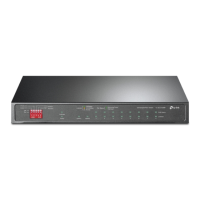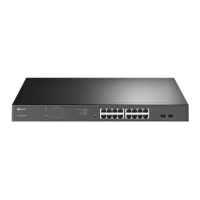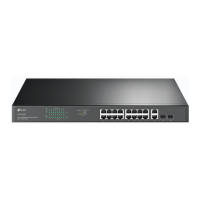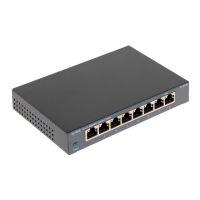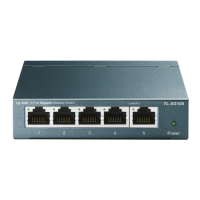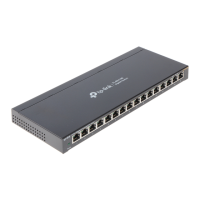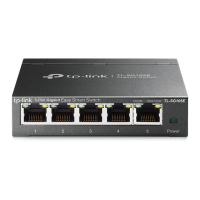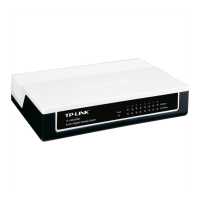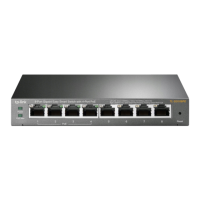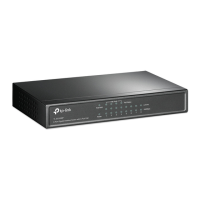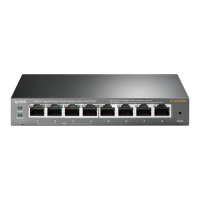Frequently Asked Questions (FAQ)
The Power LED should be lit when the power system is working normally. If the Power LED is
not lit, please check as follows:
A1:
Make sure the AC power cord is connected the switch with power source properly.
A2:
Make sure the voltage of the power supply meets the requirements of the input voltage
of the switch.
A3:
Make sure the power source is on.
Q1. The Power LED is not lit.
It is recommended that you check the following items:
A1:
Make sure that the cable connectors are rmly plugged into the switch and the device.
A2:
Make sure the connected device is turned on and working well.
A3:
The cable must be less than 100 meters long (328 feet). If Extend Mode is enabled, it
should be less than 250 meters (820 feet).
Q2. Why is the Link/Act LED not lit while a device is connected to
the corresponding port?
For technical support and other information, please visit
https://www.tp-link.com/support, or simply scan the QR code.
To ask questions, find answers, and communicate with TP-Link users or
engineers, please visit https://community.tp-link.com to join TP-Link
Community.
Safety Information
Keep the device away from water, re, humidity or hot environments.
Do not attempt to disassemble, repair, or modify the device. If you need service, please
contact us.
Place the device with its bottom surface downward.
Do not use damaged charger or USB cable to charge the device.
Do not use any other chargers than those recommended.
Adapter shall be installed near the equipment and shall be easily accessible.
TP-Link hereby declares that the device is in compliance with the essential requirements
and other relevant provisions of directives 2014/30/EU, 2014/35/EU, 2011/65/EU and
(EU)2015/863.
The original EU declaration of conformity may be found at
https://www.tp-link.com/en/support/ce/
EU declaration of conformity
Specications
Q3. Why is PoE/PoE+ Port not supplying power for PoE devices?
When the total power consumption of connected PoE devices exceeds the maximum, the
PoE port with a smaller port number has a higher priority. The system will cut o power to
the ports with larger port numbers to ensure supplying to other ports.
Take TL-SG1008P as an example. If port 1, 2 and 4 are consuming 15.4 W respectively, and
an additional PoE device with 20 W is connected to port 3, the system will cut o the power
of port 4 to compensate for the overload.
IEEE 802.3i, IEEE 802.3u, IEEE 802.3ab, IEEE 802.3x,
IEEE 802.3af, IEEE 802.3at, IEEE 802.3bt (Only for TL-SG1210PP),
IEEE 802.1p
IEEE 802.3z (For TL-SG1210P/TL-SG1210MP/TL-SG1210PP)
For TL-SG1008P:
8 10/100/1000 Mbps RJ45 Ports, Auto-Negotiation MDI/MDIX;
PoE Ports: Port 1-4
For TL-SG1210P:
9 10/100/1000 Mbps RJ45 Ports, Auto-Negotiation MDI/MDIX;
1 1000 Mbps SFP port;
PoE Ports: Port 1-8
For TL-SG1210MP/TL-SG1210PP:
10 10/100/1000 Mbps RJ45 Ports, Auto-Negotiation MDI/MDIX;
1 1000 Mbps SFP port (Combo);
PoE Ports: Port 1-8
10BASE-T: UTP category 3, 4, 5 cable (maximum 100 m);
EIA/TIA-568 100 Ω STP (maximum 100 m)
100BASE-TX: UTP
category
5, 5e
cable (maximum
100
m);
EIA/TIA-568 100 Ω STP (maximum 100 m)
100BASE-FX/LX10/BX10: MMF, SMF
(Only for TL-SG1210PP)
1000BASE-T: UTP
category 5e cable or above (maximum 100 m);
EIA/TIA-568 100 Ω STP (maximum 100 m)
1000BASE-SX/LX/LX10/BX10: MMF, SMF
(Only for
TL-SG1210P/TL-SG1210MP/TL-SG1210PP)
TL-SG1008P: 16 Gbps
TL-SG1210P/TL-SG1210MP/TL-SG1210PP: 20 Gbps
Store-and-Forward
Automatically learning, automatically aging
Input: 100-240 VAC, 50/60 Hz
Output: 53.5 V DC/2.43 A (For TL-SG1210MP/TL-SG1210PP)
53.5 V DC/1.31 A (For TL-SG1008P/TL-SG1210P)
TL-SG1008P: 64 W (up to 30 W for each PoE port)
TL-SG1210P: 63 W (up to 30 W for each PoE port)
TL-SG1210MP: 123 W (up to 30 W for each PoE port)
TL-SG1210PP: 123 W (up to 60 W for port 1-2 and 30 W for port
3-8)
Ye s
TL-SG1008P: 105 mm
TL-SG1210P/TL-SG1210MP/TL-SG1210PP: 150 mm
Standard
General Specications
A1:
Before upgrading a connected PoE powered device (PD), disable PoE Auto Recovery to
avoid the PD’s damage.
A2:
When a PD does not send data packets to the switch for a long period in certain
scenarios (e.g. an IPC in sleep mode), disable PoE Auto Recovery to avoid the PD
repeatedly rebooting.
Q4. What should I notice before using the PoE Auto Recovery
feature?
Operating Temperature
Storage Temperature
Operating Humidity
Storage Humidity
0˚C to 40˚C (32˚F to 104˚F)
-40˚C to 70˚C (-40˚F to 158˚F)
10% to 90%RH non-condensing
5% to 90%RH non-condensing
Environmental and Physical Specications
UK declaration of conformity
TP-Link hereby declares that the device is in compliance with the essential requirements
and other relevant provisions of the Electromagnetic Compatibility Regulations 2016 and
Electrical Equipment (Safety) Regulations 2016.
The original UK declaration of conformity may be found at
https://www.tp-link.com/support/ukca
The plug on the power supply cord is used as the disconnect device, the
socket-outlet shall be easily accessible.
Switching Capacity
Network Media (Cable)
Interface
Power Supply
PoE Budget
MAC Address Learning
Transfer Method
Distance Between
Mounting Holes
Wall Mountable

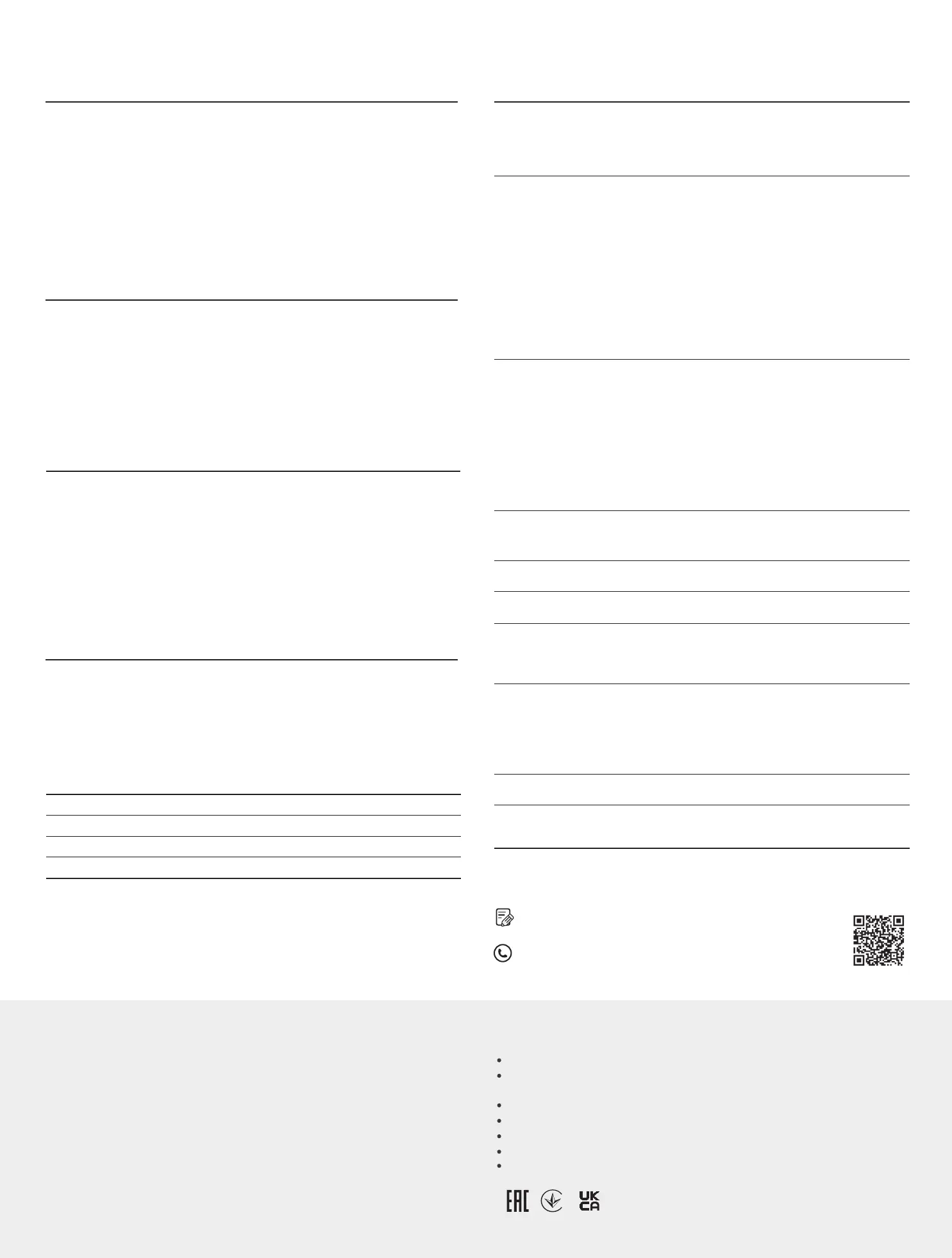